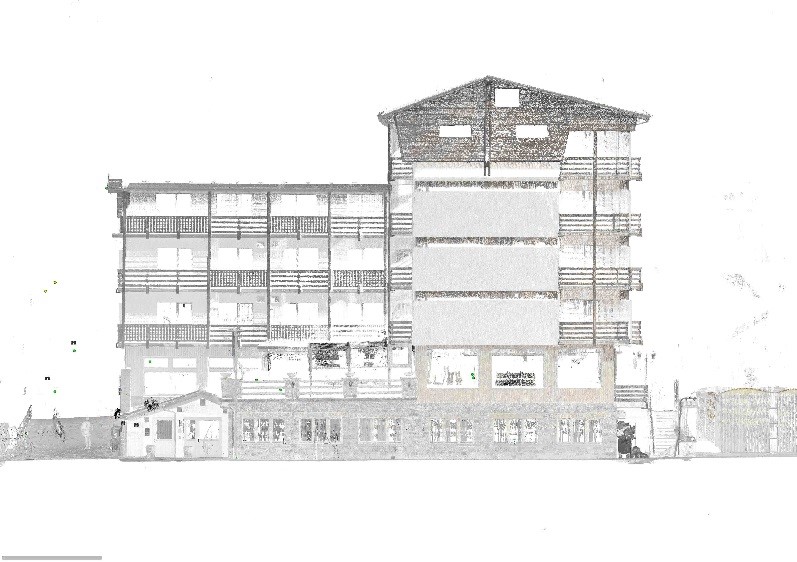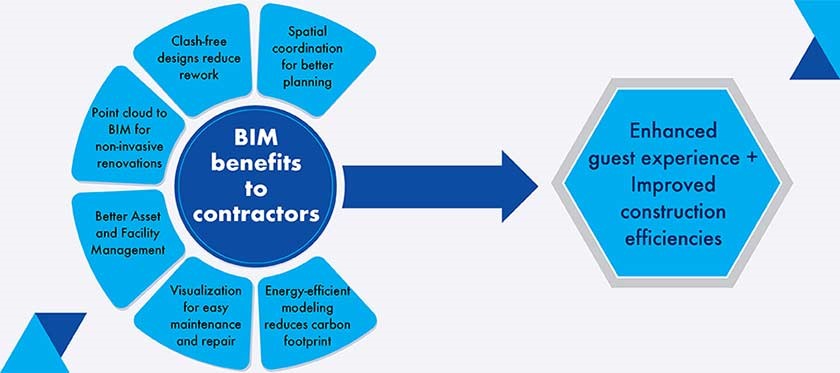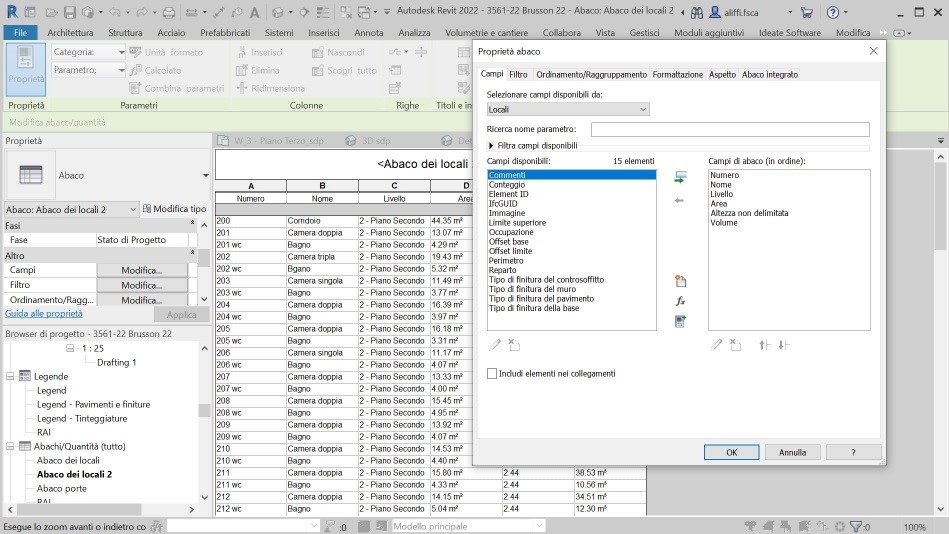AUTORE: Arch. Francesca Aliffi
RELATORE: Prof.ssa Arch. Ing. Paola Ronca
INTERNSHIP: WIP Architetti
MASTER: Master in “BIM Manager” a.a. 2021/2022
Il forte cambiamento, portato dal BIM, Building Information Modeling, è ormai in atto e non è più arrestabile e non deve essere collocato esclusivamente nell’ambiente ristretto della innovazione tecnologica, ma deve essere percepito e vissuto come opportunità per una rivisitazione delle relazioni tra tutti i soggetti coinvolti, che vanno dalla committenza ai fruitori finali del bene edilizio.
Il presente contributo intende esplorare le potenzialità della metodologia di Building Information Modeling con specifico riferimento al settore hospitality. Per avere maggior successo e stare al passo con la concorrenza nel settore alberghiero e turistico, sempre più albergatori si affidano a tecnici e professionisti che adottano ed implementano la tecnologia BIM allo sviluppo classico del progetto. Le soluzioni BIM consentono una maggiore attenzione ai vari aspetti della progettazione e gestione della commessa, tra cui la pianificazione e la programmazione delle fasi della costruzione, la gestione delle strutture, la progettazione HVAC, l’accelerazione del processo di costruzione, la gestione del processo del flusso di lavoro, ecc. La progettazione funzionale di primo ordine, progettata per massimizzare lo spazio e la comodità degli ospiti diventa ancora più fondamentale. Per garantire tassi di occupazione più elevati, gli hotel devono offrire la migliore esperienza al cliente in termini di comfort e servizi.
Il caso studio scelto è l’HG Hotel Italia, che si trova a Brusson (Aosta) per il quale si intende avviare un processo di ristrutturazione dell’hotel esistente, al fine di migliorare gli standard qualitativi ed energetici dell’edificio e potenziare l’offerta ricettiva con nuovi servizi.
La commessa è stata gestita con una metodologia di lavoro BIM il quale permette di generare una crescita progressiva di informazioni legate all’opera; se in un metodo di tipo tradizionale ci sono delle dis-efficienze e spesso delle perdite di informazioni, uno degli obiettivi della modalità operativa BIM è quello di arricchire progressivamente il modello dell’opera senza dispersione di informazioni e fornire dati affidabili a tutti i soggetti della filiera e in tutta la fase del processo.
Parte importante del processo è la parametrizzazione degli oggetti che compongono il modello, questi costituiscono la base per la realizzazione di un qualsiasi modello informativo ma soprattutto per la parte di documentazione successiva; realizzare un modello digitale non vuol dire solo creare un modello 3D, ma consiste nel dare quelli che sono gli attributi informativi e, soprattutto, estrarli.
FOR INTERNATIONAL STUDENTS:
The strong change, brought about by BIM, Building Information Modeling, is now underway and can no longer be stopped and must not be placed exclusively in the restricted environment of technological innovation, but must be perceived and experienced as an opportunity for a review of the relationships between all stakeholders, ranging from the client to the end users of the building asset.
This contribution explores the potential of the Building Information Modeling methodology with specific reference to the hospitality business. To be more successful and keep up with the competition in the hotel and tourism industry, more and more hoteliers are relying on technicians and professionals who adopt and implement BIM technology in the classic project development. BIM solutions allow greater attention to the various aspects of project design and management, including construction phase planning and scheduling, facilities management, HVAC design, faster construction process, workflow management, etc. First-order functional design planned to maximize space and guest comfort becomes even more critical. To ensure higher occupancy rates, hotels must provide the best customer experience in terms of comfort and amenities.
The case study chosen is the HG Hotel Italia, located in Brusson (Aosta) for which we intend to start a process of restructuring the existing hotel, in order to improve the quality and energy standards of the building and enhance the accommodation offer with new services.
The project was managed with a BIM working methodology which allows for the generation of a progressive growth of information related to the work; while in a traditional type of method there are inefficiencies and often losses of data, one of the goals of the BIM operating mode is to progressively enrich the model of the work without dispersion of data and to provide reliable data to all stakeholders of the supply chain and throughout the process.
An important part of the process is the parameterization of the objects that make up the model, these form the basis for the realization of any information model but especially for the following documentation part; making a digital model is not just about creating a 3D model, but it consists of giving what are the information attributes and, most importantly, extracting them.



